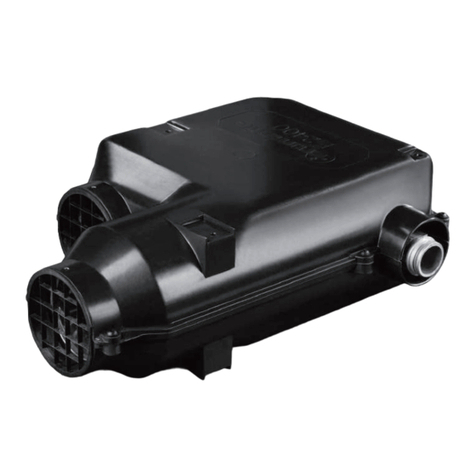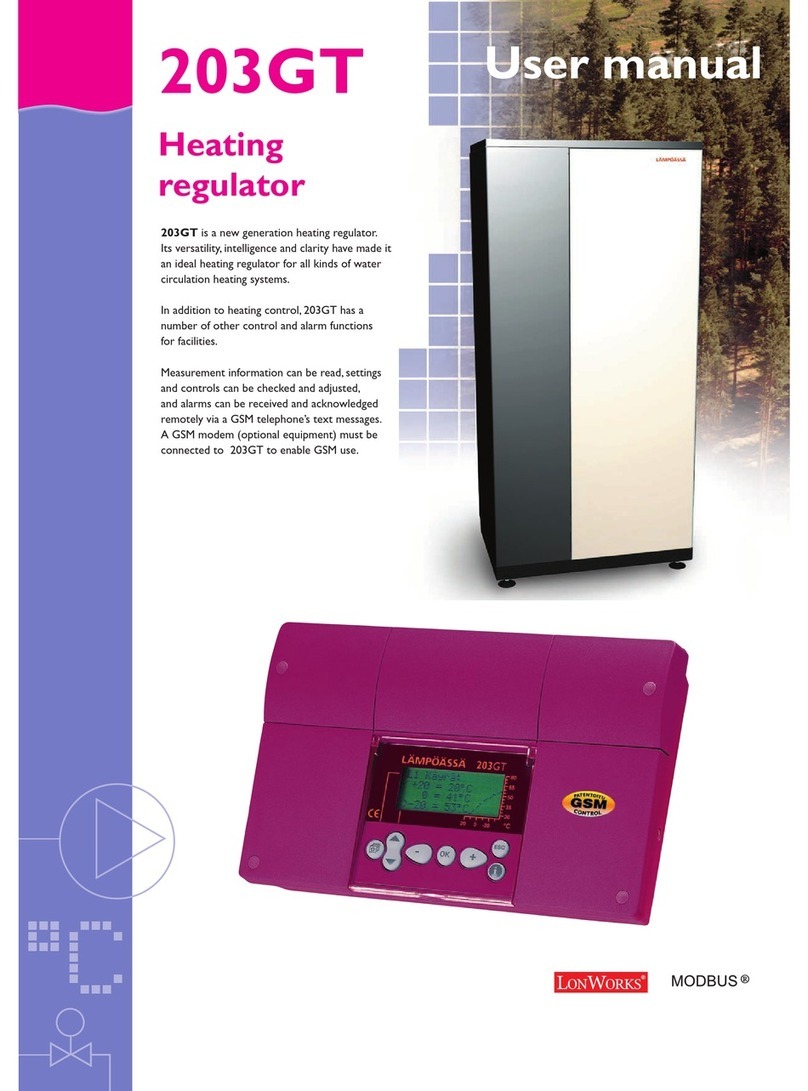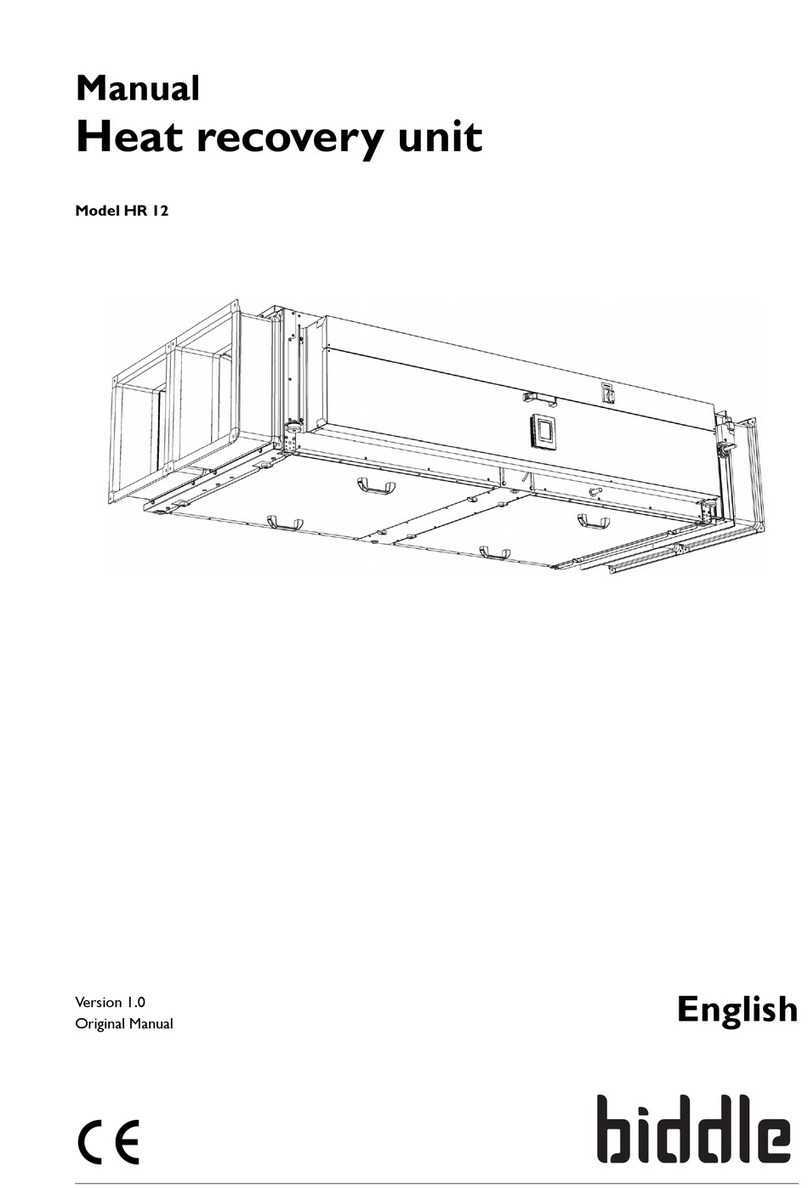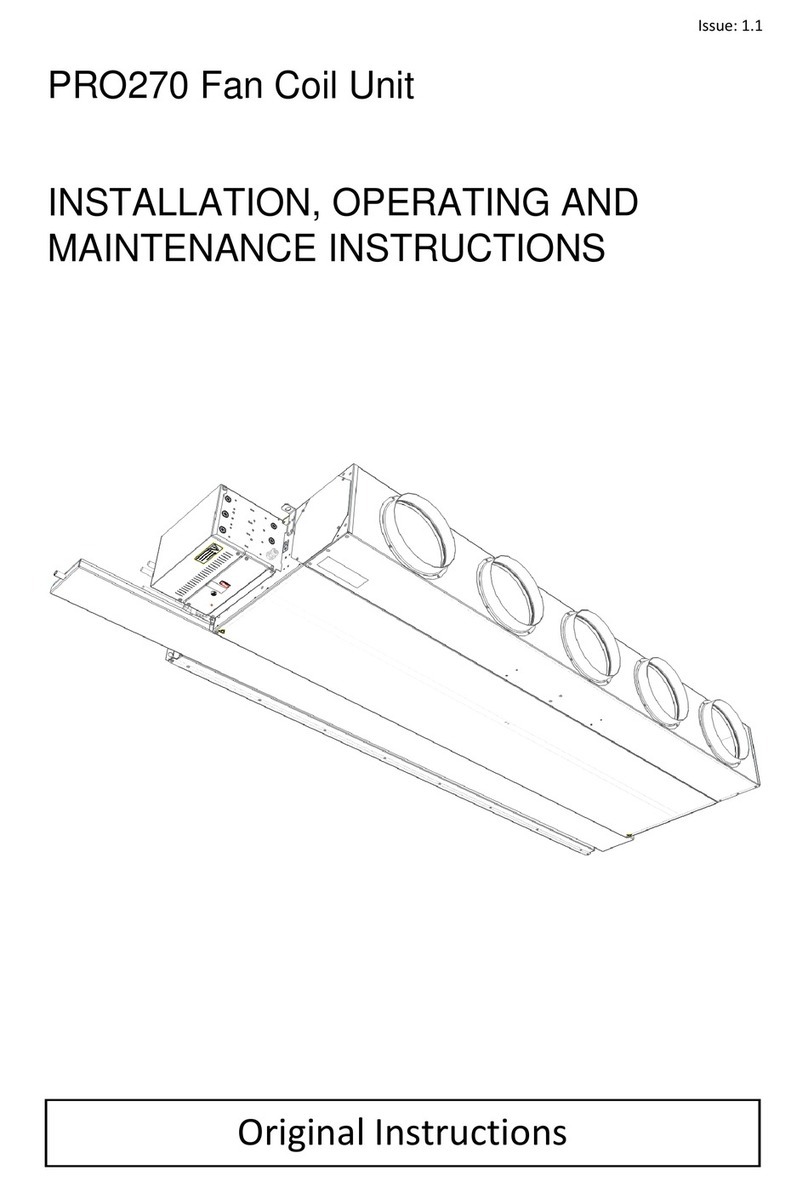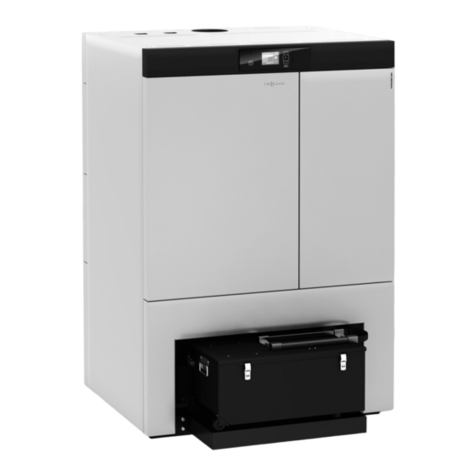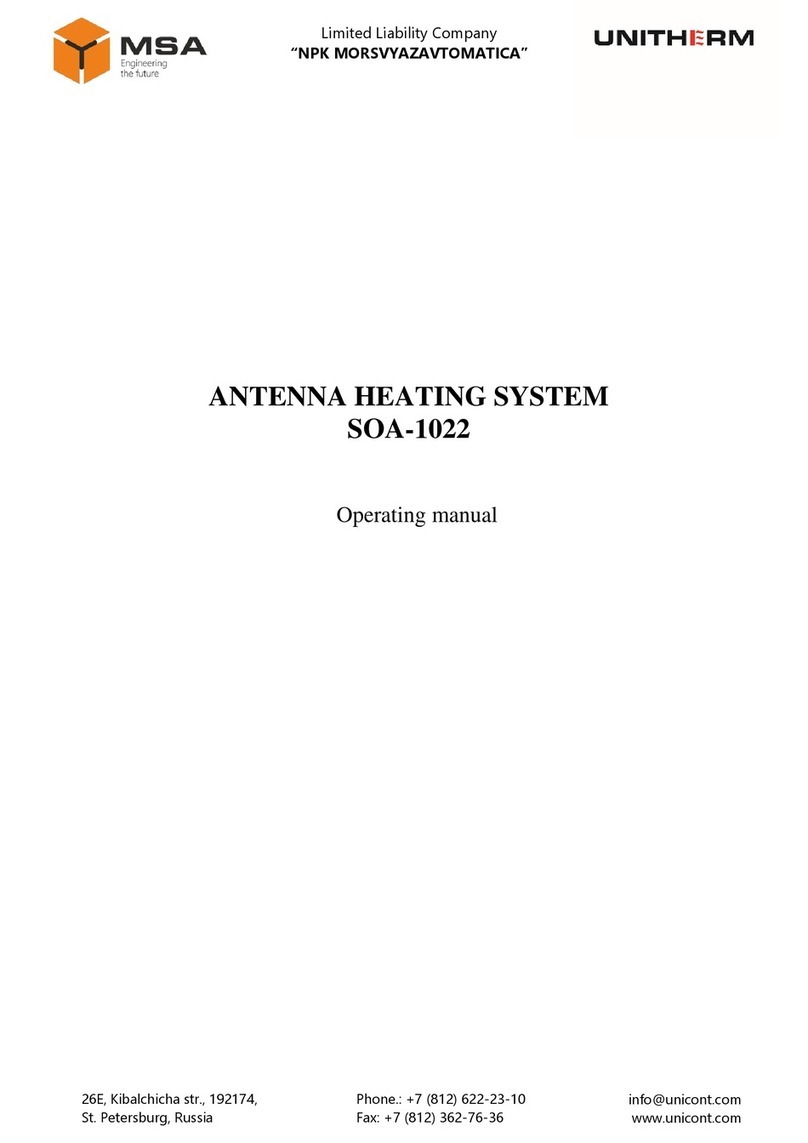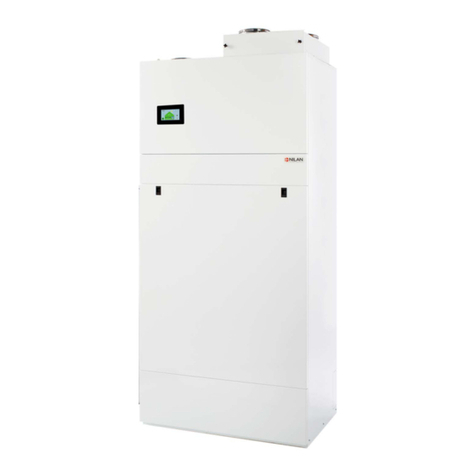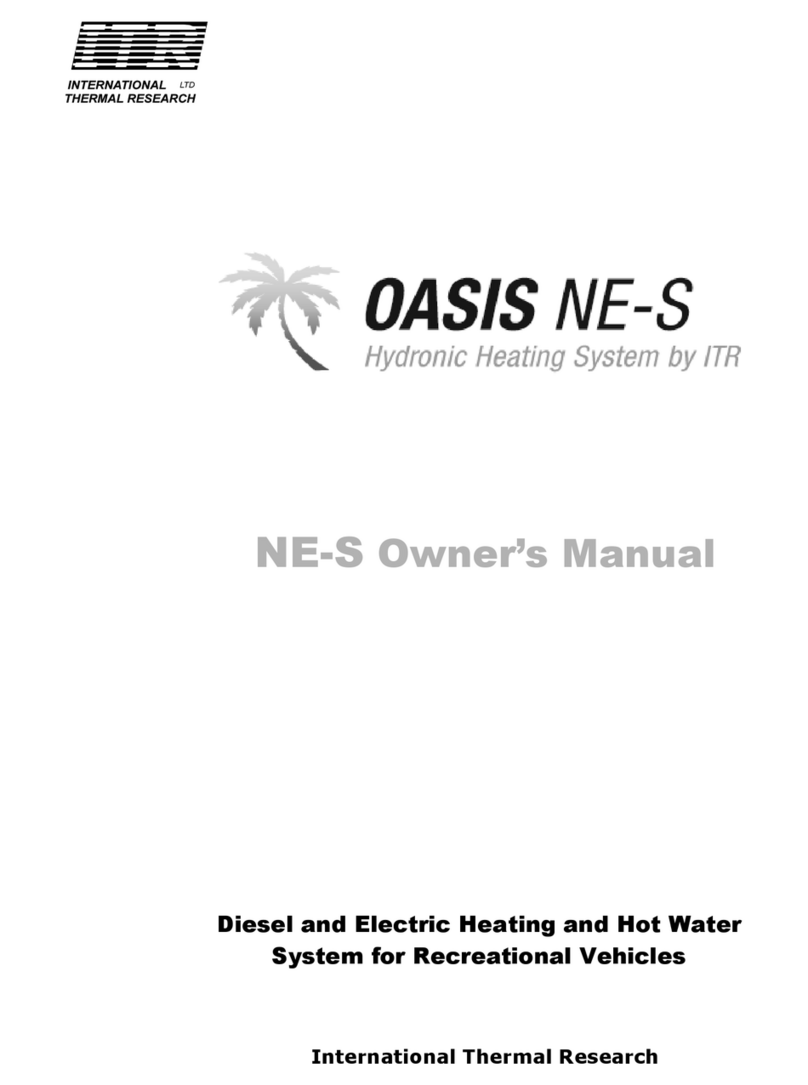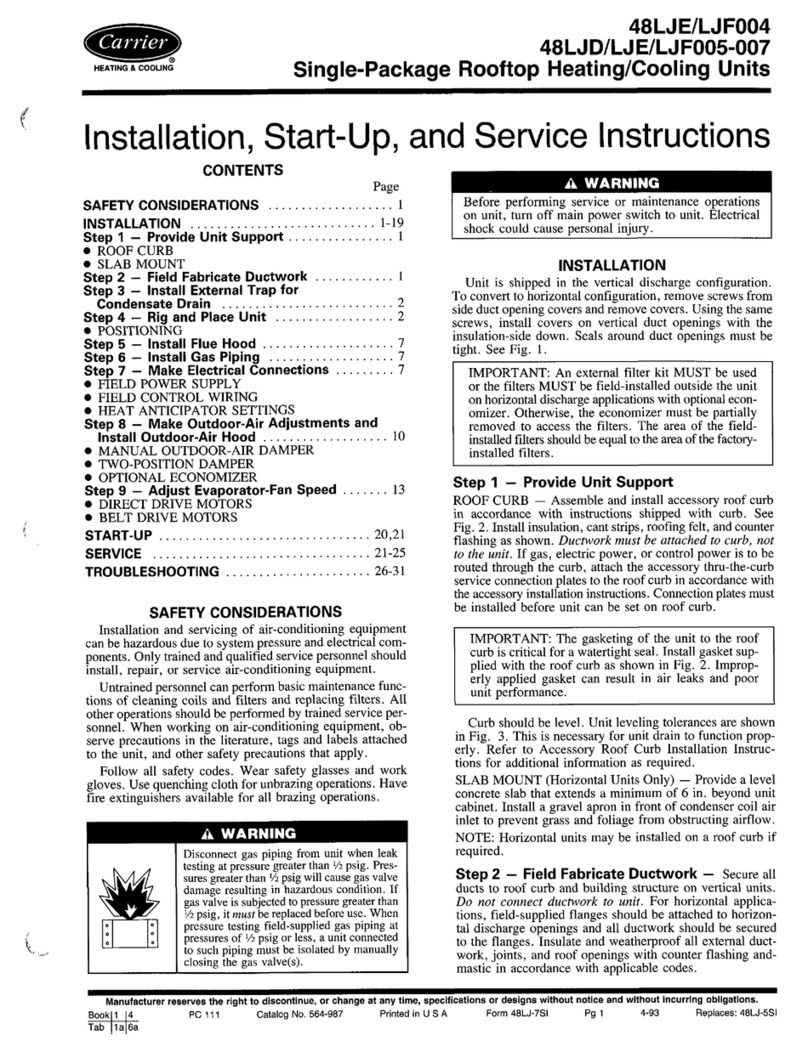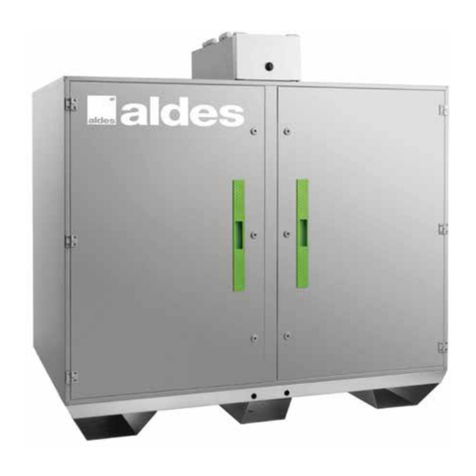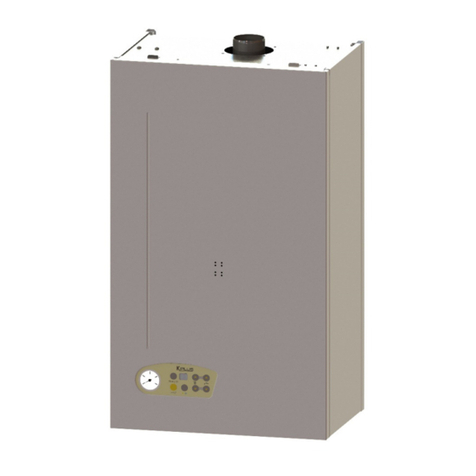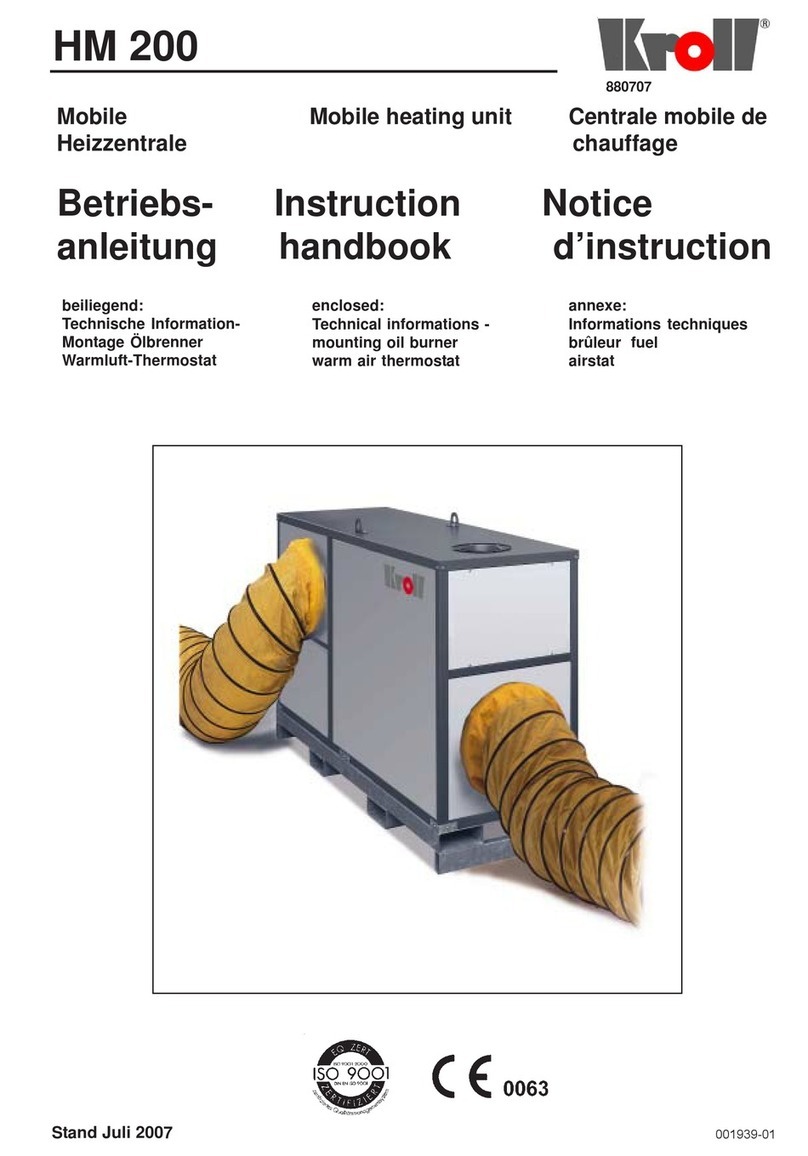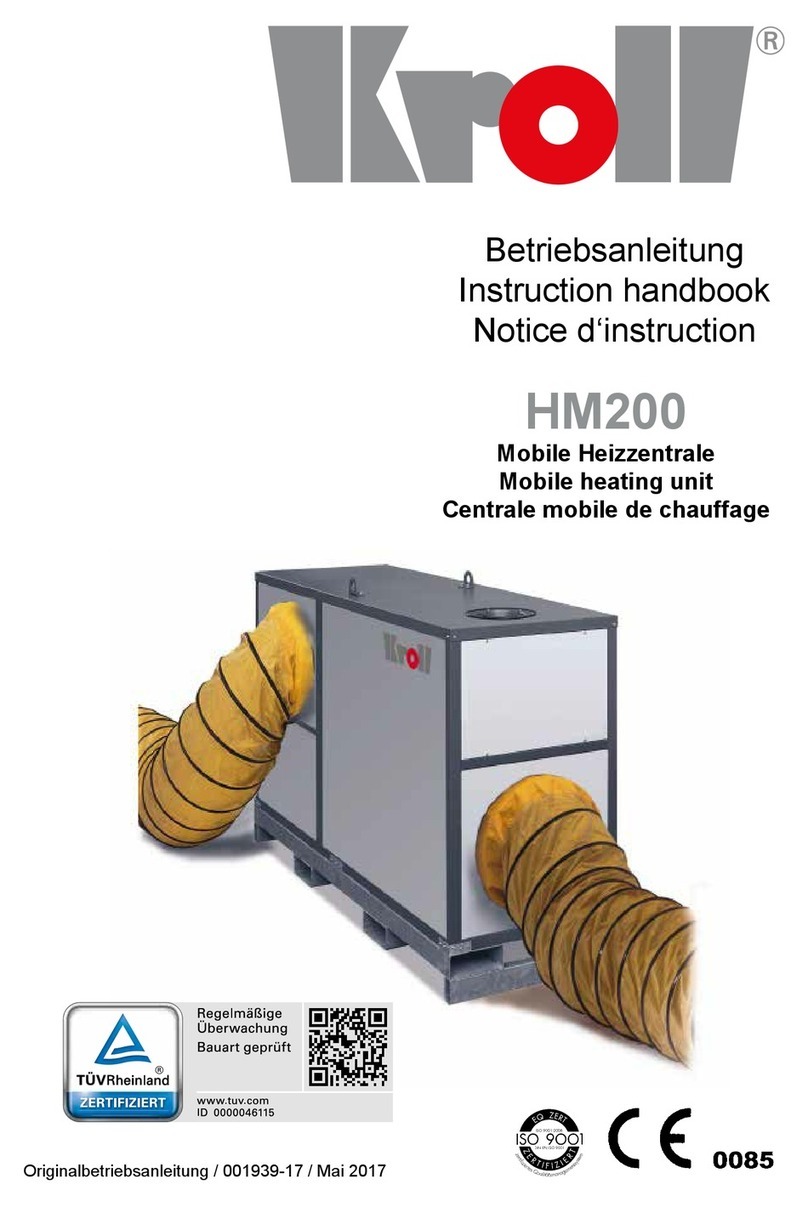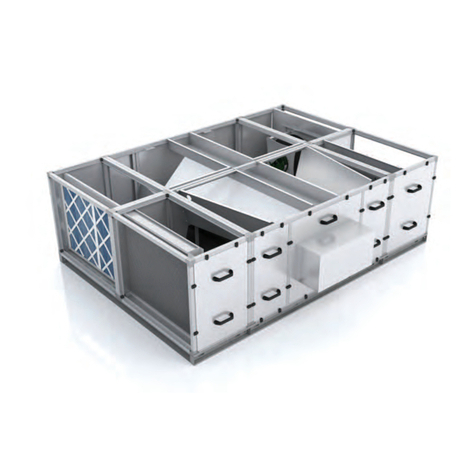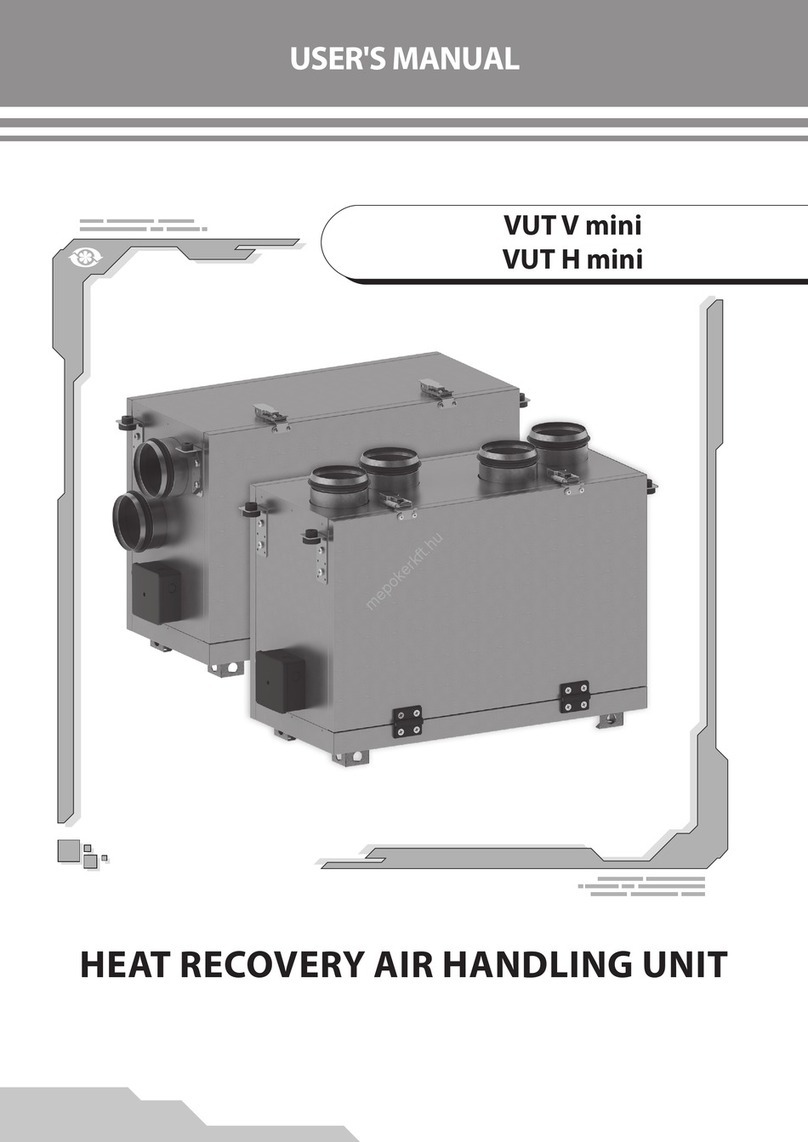
HR MANUAL INTRODUCTION
Manual version 3.0 (10-10-2017) en-9
en
1.3.6 Field of application
Observe the following limits for the unit:
Operating limits for all models
Parameters of use for water-heated models
nConsult Biddle if you want to connect a unit to a
water flow-path with higher temperatures and higher
pressure.
wThe unit may not be used in potentially
explosive environments, outdoors or in very
dusty or aggressive air conditions.
Biddle shall not be held liable for damage caused by
use under these conditions.
Sound levels
Maximum sound power level in ducts
Ambient conditions Temperature 5 °C to 40°C
Relative air
humidity
20% - 95%, not
condensing
Power supply voltage see type plate
Power see type plate
SOUND POWER LEVEL
(LWRE. 10-12 W)
OCTAVE BAND CENTRE FREQUENCY (HZ)LWA
DB(A)
63 125 250 500 1000 2000 4000 8000
HR 25
supply air 69.8 65.6 76.4 75.1 78.8 80.4 78.5 74.1 85.5
extract air 65.7 60.5 70.6 69.9 67.4 70.8 70.9 66.7 76.6
exhaust air 69.8 65.6 76.4 75.1 78.8 80.4 78.5 74.1 85.5
fresh air 65.7 60.5 70.6 69.9 67.4 70.8 70.9 66.7 76.6
HR 35
supply air 75.8 70.7 78.6 78.4 81.3 81.2 78.3 75.4 86.6
extract air 68.6 65.8 75.5 72.3 69.2 70.2 68.2 67.2 76.7
exhaust air 75.8 70.7 78.6 78.4 81.3 81.2 78.3 75.4 86.6
fresh air 68.6 65.8 75.5 72.3 69.2 70.2 68.2 67.2 76.7
